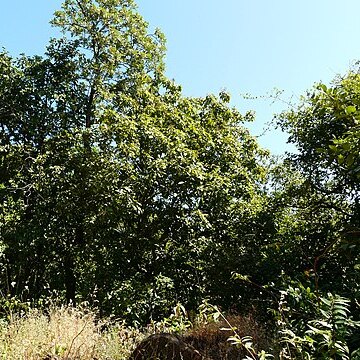A large tree. The leaves are 15-30 cm long. They have 2-3 pairs of leaflets. These are 8-18 cm long by 5-8 cm wide. They are narrowly sword shaped. The fruit has 2-3 lobes. There is one seed in each cell. The seeds are black and 6-9 mm long.
Calyx outside hairy all over. Disc, pistil, and fruit hairy.

